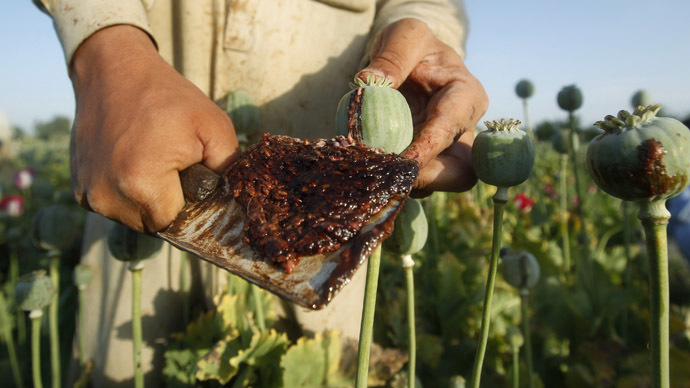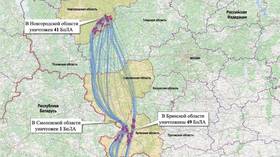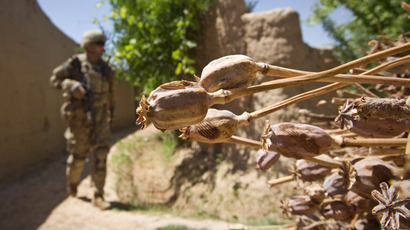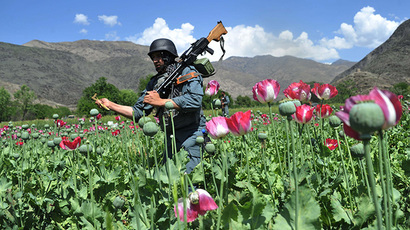Land used for opium cultivation at historic high – UN

The amount of land used for cultivating opium poppies around the world is at an all-time high, says a UN report. Afghanistan is largely behind the increase, with its crop growing by 36 percent over a year, producing 80 percent of the world’s opium.
A World Drug Report released by the UN’s Vienna-based
Office on Drugs and Crime (UNODC) has charted the global use of
drugs. Although it says that global drug use is
“stable,” it notes that the cultivation of opium has
grown drastically.
Afghanistan heads the field documenting a massive increase in
2012, with at least 209,000 hectares devoted to the cultivation
of opium. Myanmar comes in second place, with a total of 57,800
hectares used to grow the primary ingredient of heroin.
“The main area of cultivation in Afghanistan was in nine
provinces in the southern and western part of the country, while
the major increase was observed in Helmand and Kandahar. In
Myanmar, the increase in the area of cultivation was not as
pronounced as in Afghanistan,” says the report.
According to the document, the production of opium has not
increased as radically as its cultivation. The UN estimates that
in 2013 6,883 tons were produced, “which is a return to the
levels observed in 2011 and 2008.” According to the report,
the production of heroin, on the other hand, has risen, totaling
560 tons in 2013, compared to 2008’s figure of 600 tons.
The UNODC classifies drug use around the world as stable,
estimating that 5 percent of the world’s population aged between
15 and 64 years used an illegal drug in 2012. It says that around
27 million people are considered “problem drug users,”
about 6 percent of the world’s population.
The UN body found that marijuana remains the world’s most
consumed drug, with almost 180 million people consuming the drug
in 2012. The report also notes that North America has witnessed
an increase in the use of the recreational drugs, which it
attributes to a widespread perception of “lower health
risks.”
The UN has been critical of the decision to legalize the drug in
the states of Washington and Colorado this year. It maintains
that the repeated use of pot can lead to serious health
disorders, including memory impairment and lung disorders.
"Medical research tells us clearly that the use of cannabis,
particularly at early ages, can be very harmful for the
health," UN Office on Drugs and Crime chief researcher
Angela Me told a news conference on Thursday, Reuters reported.
The South American nation of Uruguay became the first country in
history to fully legalize cannabis last year. The country’s
President Jose Mujica dismissed criticism from the UN and has
championed the initiative as a way of bringing Uruguay’s illegal
drugs market under state control.














